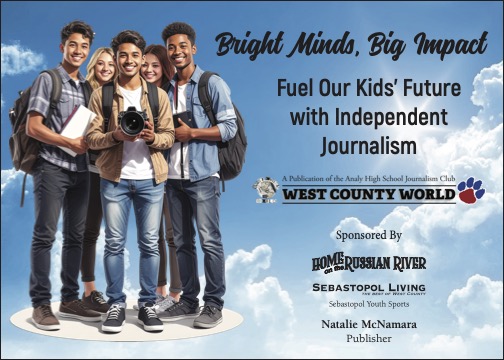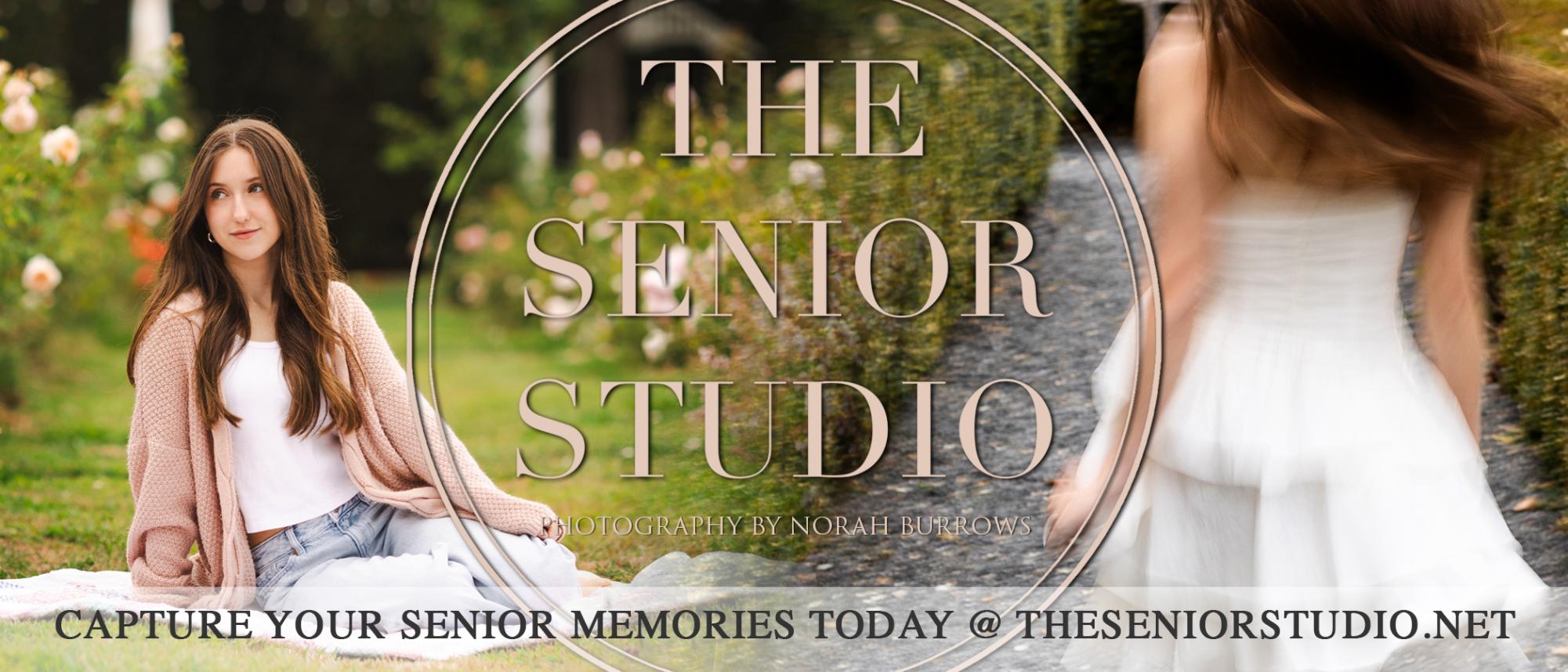To what extent do values shape citizens’ perceptions of self-determination in Ukraine?
September 25, 2022
Historical Perspective:
In an article published on the Kremlin website in early July of 2021, Russian President Vladmir Putin postulated that Russians and Ukrainians are one group of people; with a shared history and culture and therefore shouldn’t be two different countries (Putin). This is not a new world vision, for example in 2008 during a NATO Summit (Schwirtz), as well as following the annexation of Crimea in 2014 (Schwirtz), Vladmir Putin also denied Ukrainian statehood. His contention undermines Ukrainian identity, fostering an absence of legitimacy for the nation’s sovereignty. This begs the question: Is Putin’s historical assessment valid or is there evidence in Ukraine’s past that supports a claim to an independent state, separate from Russia?
According to Harvard professor of Ukranian history Serhii Plokhy, the formation of Ukrainian identity began to form after the Mongols were repelled from Ukraine in the 15th century. Subsequently, a large diverse population settled into the Southern Euroasian Steppe and Ukrainian Cossacks established their own independent state. (Throughline)
Vladmir Putin’s perception of the formation of Ukraine stands in stark contrast. In a televised speech he stated “modern Ukraine was entirely and fully created by Russia, more specifically the Bolshevik, communist Russia.” (Shepherd) Putin asserted that the 1917 Russian Revolution, which overthrew the monarchy of the Tzars, led to the creation of the Soviet Union including Ukraine, thus beginning the period of common history.
In reality, the opposite is true. The notion of resistance to “outside authority” and freedom is an integral part of Ukraine’s history. In his book “The Cossack Myth ” published by Cambridge Core (Plokhy), Plokhy references that Cossacks “became the symbol of freedom of liberty”; serving as inspiration for Ukranians throughout the ages. Culture flourished, universities were established, and civilization thrived.
In a poem published in the 19th century titled “Sochineniia I Perepiska ” (Plokhy) Russian poet Kondratii Ryleev described the Cossacks as champions of freedom and recognized that the Ukranians “inspired a seething generation”(Plokhy) of values such as freedom and liberty.
Over the centuries Russian authority intermittently attempted to curtail their sovereignty, but a number of key events inspired resistance by Ukranians who desired their freedom.
One of these events took place in the 1920’s, Joseph Stalin stigmatized the Kulaks, the peasant class, who opposed collectivization of industry and farms. In research from the Head of the Department for Ethno-Political Studies at Harvard University Yuri Shapoval discovered the Russian government accused the Kulaks of sabotaging “grain production” (Shapoval), leading to a policy of “Dekulakization” (Shapoval) to eliminate dissenting citizens in Ukraine. This campaign targeted prosperous Ukrainians through mass arrests and political repression.
Estimates hypothesize three to ten million citizens starved to death as a direct result (Holodomor). A paper published in the peer-reviewed Irish Journal of applied Social Studies posits the Holodomor was a “purposeful and calculated act and attempt to achieve the eradication of a whole people through death by starvation” (Stark) in order to quell Ukrainian resistance.
A second key event followed the 1986 Cherynobl nuclear accident, located in Ukraine. In an article published by the Soviet Pravda newspaper in 1898, the USSR revealed that the fallout from the nuclear disaster was larger than initially reported (Vitkovskaya). The perceived cover up of the disaster caused outrage amongst Ukrainian citizens as they had unknowingly been exposed to the harmful dangers of radiation. The lack of transparency led to a distrust of Moscow, fueling resistance.
People continued protesting the Soviet regime, culminating in the 1990 Ukrainian Wave, a human chain from Kiev to Lviv, calling for independence (How). Hundreds of thousands of people joined hands across 700 miles in what was seen as the largest public demonstration in late-Soviet Ukraine. Nearly a year later 93% of Ukrainian citizens voted in a referendum (report) that finally saw the country gain sovereignty, underlying Ukrainian desires of self-determination.
Social and Cultural Perspective:
What fueled this impetus for independence in Ukraine? Alexis de Tocqueville asserts prioritizing common interests, civic engagement, and a harmonized culture is essential for having a successful, sovereign nation.
To begin, the notion of placing the communal needs above one’s individual needs is a key element towards maintaining a healthy, democratic society. In his book Democracy in America, Tocqueville states “A people amongst which individuals should lose the power of achieving great things single-handed, without acquiring the means of producing them by united exertions, would soon relapse into barbarism.” (Tocqueville)
In Ukraine, citizens have repeatedly joined together to fight against Russia attempting to destroy them. Many Ukranians, from all walks of life, have unified towards determining their own future. Associating with “territorial defense battalions, units of selected volunteers overseen by military officers [per region]…organized local civil defense units” (Sheth), often at risk of their own lives. President Zelenksyy has offered to supply munitions to any Ukranians who are willing to engage in defending their nation’s sovereignty . (Sheth) Moreover, 15% of the Ukrainian army is now composed of women “taking cash courses in battlefield medicine [and munition training].” (Over) although some deployed are former teachers and nurses.
The fight for independence has showcased large populations of young citizens’ resistance to Russian intrusion. Many of these citizens grew up under the period of the referendum for independence in the 1990’s and are engaged to determine their future. In Ukraine, the average age of MP’s in Parliament is 31 to 40 years old (Data). In contrast, the average age of a US congressional representative is 58 years old (Carey). In addition to being civically engaged, the youthful parliament is entering the mobilization effort. Ukrainian member of parliament Kira Rudyk, aged 36, described other members of Parliament as willing to fight in the war. (These) Former heavyweight champion of the world Wladimir Klitcho, who returned to fight in Ukraine, espoused on Twitter “The Ukrainian people are strong. And it will remain true to itself in this terrible ordeal. A people longing for sovereignty and peace.” (Person).
Values of sovereignty and freedom are constant amongst Ukrainian citizens, which have held strong despite outside encroachment. Therefore, citizens have conviction in their values, correlating to the premise of “The Holdout” by Norman Rockwell (Rockwell). The painting by Rockwell, a famed American artist who captured everyday life, is of a woman surrounded by fellow jury members. The portrait illustrates standing firm on one’s beliefs despite outside pressure from other members of society.
Artistic:
The use of art is an alternative medium to find commonality and resist oppression, more specifically non-violent resistance can spark momentum for large social and political change. Large gatherings of protests create sentiment that there is a strength in numbers, cultivating citizens’ hope of societal progress. Choral conductor and manager Kaie Tanner stated during the Estonian Song of Protest there were “80,000 people, they can’t arrest and kill all of us” (Song). The song emerged as the nation strived for independence from the Soviet Union. Celebration Choir leader Kristel Leppik participants “Cherish freedom and culture.” (Song) The protests gave citizens hope, fueling resistance amongst Estonians.
Similar to Estonia, Ukraine, a former satellite state under the Soviet Union, has utilized different means of resistance to further unity towards Kremlin authority through their national anthem, the Orange Revolution, and the Euromaidan protest.
Written in the 19th century, Oakland University political scientist Paul Kubiek states the Ukrainian national anthem provided “a time of cultural awakening,” for citizens (Marshall). Research from a professor of Ukranian studies at Cambridge found Kremlin leadership actively censored the song during the Russification period. Despite this, the anthem continues to be an essential part of the country’s identity; when Ukraine gained sovereignty the song once again prevailed.
The Orange Revolution also showcased Ukraine’s ability to stand up to outside influence. During the 2004 election Presidential candidate Viktor Yushchenko was poisoned with a toxic substance called dioxin (Karatnycky). Many believed it was an attempted assasination carried out by Moscow to position the Kremlin-supported candidate Vicktor Yanukovych. In a press conference Yushchenko claimed “What happened to me was an attempt to politically destroy a politician with opposing views…an attempt to kill me.” ( Holley). As a result, massive, nationwide protests broke out across Ukraine leading to a recount. Yusechenko was subsequently declared President.
Finally, in a series of protests beginning in late 2013 called Euromaidan, citizens protested corrupt government officials, under the thumb of Moscow, who tried to thwart their wishes to become closer to the E.U. instead of Russia (Understanding). Citizens expressed their embrace of democracy during demonstrations, rejecting the tyranny of Russia. Subsequently, corrupt officials- including then-President Vicktor Yanukovych- were ousted from Parliament and fled the country. A new unity government took formation in efforts to connect Ukraine to the West.
Values have significantly influenced citizens’ perceptions of sovereignty in Ukraine. Passed down through generations, citizens hold onto ideas of freedom and independence from Russia throughout the centuries, despite attempts to diminish or eradicate them. These values have become part of their identity through history, culture, art, and music and now propel Ukraine towards its destiny of self-determination.
Work Cited
Stimulus Material
De Tocqueville, Alexis. “Democracy in America, 1835-1840.” AP Seminar Performance Task 2: Individual Research-Based Essay and Presentation, College Board, 2022, pp. 23-25. Originally published in Democracy in America, 1835-1840, .
Rockwell, Norman. “The Holdout.” AP Seminar Performance Task 2: Individual Research-Based Essay and Presentation, College Board, 2022, p. 13. Originally published in Saturday Evening Post, 14 Feb. 1959.
“The Song of Freedom at the Estonian Song & Dance Festival.” YouTube, uploaded by Nikon Europe, 18 July 2014, youtu.be/aCDsPbUORtc. Accessed 19 Feb. 2022.
Other References
A Report Prepared by the Staff of the Commission on Security and Cooperation in Europe. “The December 1, 1991 Referendum/Presidential Election in Ukraine.” Commission on Security and Cooperation in Europe, https://www.csce.gov/sites/helsinkicommission.house.gov/files/120191UkraineReferendum.pdf.
Carey, Signe. “116th United States Congress: A Survey of Books Written by Members: Introduction.” Edited by Matthew Stalbaum et al., Library of Congress, https://guides.loc.gov/116th-congress-book-list#:~:text=The%20average%20age%20of%20Members,a%20majority%20in%20the%20Senate.
“Data on Youth in National Parliament.” Parline: the IPU’s Open Data Platform, 1 Jan. 1975, https://data.ipu.org/node/181/data-on-youth?chamber_id=13550.
Hall, Ben. “How Ordinary Ukrainians Prepared for a Russian Invasion.” Financial Times, Financial Times, 24 Feb. 2022, https://www.ft.com/content/1cc734db-564e-44b4-8fa5-b37feecadec3.
Holley, David. “Ukraine’s Yushchenko More Sure of Poisoning.” Los Angeles Times, Los Angeles Times, 11 Dec. 2004, https://www.latimes.com/archives/la-xpm-2004-dec-11-fg-ukraine11-story.html.
“Holodomor.” College of Liberal Arts, University of Minnesota , https://cla.umn.edu/chgs/holocaust-genocide-education/resource-guides/holodomor.
How Ukrainians Created Human Chain in Late USSR to Mark Anniversary of … https://euromaidanpress.com/2020/01/22/how-ukrainians-created-human-chain-in-late-ussr-to-mark-anniversary-of-ukraines-unification-archival-photographs/.
Jacobson, Louis, et al. “Putin Says Parts of Ukraine Have Been Russian since ‘Time Immemorial.’ That’s a One-Sided View of History.” Poynter, 24 Feb. 2022, https://www.poynter.org/fact-checking/2022/was-ukraine-part-of-russia/.
Karatnycky, Adrian. “Ukraine’s Orange Revolution.” The New York Times, The New York Times, 12 Apr. 2005, https://archive.nytimes.com/www.nytimes.com/cfr/international/20050301faessay_v84n2_karatnycky.html?_r=0.
Kitsoft. “Cabinet of Ministers of Ukraine – Decentralization Reform.” Головна, https://www.kmu.gov.ua/en/reformi/efektivne-vryaduvannya/reforma-decentralizaciyi.
Klein, Ezra. “A Ukrainian Philosopher on What Putin Never Understood about Ukraine.” The New York Times, The New York Times, 12 Apr. 2022, https://www.nytimes.com/2022/04/12/opinion/ezra-klein-podcast-volodymyr-yermolenko.html.
Kurylo, Bodhana. “The Role of Chernobyl in the Breakdown of the USSR.” Digital Commons@Georgia Southern, https://digitalcommons.georgiasouthern.edu/aujh/vol6/iss1/5/.
Liberty, Radio. “How Ukrainians Created Human Chain in Late USSR to Mark Anniversary of Ukraine’s Unification: Archival Photographs.” Euromaidan Press, 22 Jan. 2020, https://euromaidanpress.com/2020/01/22/how-ukrainians-created-human-chain-in-late-ussr-to-mark-anniversary-of-ukraines-unification-archival-photographs/.
Manning, Clarence A. “Mykhaylo Drahomanov: A Symposium and Selected Writings. New York: The Annals of the Ukrainian Academy of Arts and Sciences in the United States, II, No. 1, 1952. 225 Pp.: American Slavic and East European Review.” Cambridge Core, Cambridge University Press, 25 Jan. 2017, https://www.cambridge.org/core/journals/american-slavic-and-east-european-review/article/abs/mykhaylo-drahomanov-a-symposium-and-selected-writings-new-york-the-annals-of-the-ukrainian-academy-of-arts-and-sciences-in-the-united-states-ii-no-1-1952-225-pp/EF4D0E2ACC4152C0EB576EE030153DE1.
Marshall, Alex. “Ukraine’s National Anthem Reverberates around the World.” The New York Times, The New York Times, 15 Mar. 2022, https://www.nytimes.com/2022/03/15/arts/music/ukraine-national-anthem.html.
“Over 15% of Ukraine’s Army Are Women; Foreign Ministry Says ‘Thank You’.” Moneycontrol, https://www.moneycontrol.com/news/trends/current-affairs-trends/over-15-percent-of-ukraines-army-are-women-foreign-ministry-says-thank-you-8207891.html.
Person. “Extracts from Putin’s Speech on Ukraine.” Reuters, Thomson Reuters, 21 Feb. 2022, https://www.reuters.com/world/europe/extracts-putins-speech-ukraine-2022-02-21/.
Plokhy, Serhii. “The Cossack Myth – the Cossack Myth.” Cambridge Core, Cambridge University Press, https://www.cambridge.org/core/books/cossack-myth/cossack-myth/03CC434A08936DF7DCB469F909C56EA9.
Putin, Vladmir. “On the Historical Unity of Russians and Ukrainians.” President of Russia, 12 July 2021, http://en.kremlin.ru/events/president/news/66181.
Schwirtz, Michael, et al. “Putin Calls Ukrainian Statehood a Fiction. History Suggests Otherwise.” The New York Times, The New York Times, 22 Feb. 2022, https://www.nytimes.com/2022/02/21/world/europe/putin-ukraine.html.
Shapoval , Yuri. “The Holodomor: A Prologue to Repressions and Terror in … – Jstor Home.” Jstor , Harvard Ukrainian Research Institute Harvard Ukrainian Studies, https://www.jstor.org/stable/23611468.
Shepherd, Kancha Ilaiah, et al. “’Modern Ukraine Entirely Created by Russia’ – Read Full Text of Vladimir Putin’s Speech.” ThePrint, 23 Feb. 2022, https://theprint.in/world/modern-ukraine-entirely-created-by-russia-read-full-text-of-vladimir-putins-speech/843801/.
Sheth, Sonam. “Ordinary Ukrainian Citizens Are Taking up Arms to Fend off Russian Forces as They Close in on Kyiv.” Business Insider, Business Insider, 25 Feb. 2022, https://www.businessinsider.com/ordinary-ukrainians-take-up-arms-defend-kyiv-from-russia-2022-2.
Stark, Renate. Holodomor, Famine in Ukraine 1932-1933: A Crime against Humanity or Genocide? Irish Journal of Applied Social Studies , https://arrow.tudublin.ie/cgi/viewcontent.cgi?article=1138&context=ijass.
Stuart Ramsay, Chief Correspondent. “Poisoned Ex-Ukrainian President: ‘I Know What Putin Fears’.” Sky News, Sky, 28 Mar. 2018, https://news.sky.com/story/ex-ukraine-leader-do-not-rule-out-military-action-against-russia-11306185.
“These Are the Women Choosing to Stay and Fight Russian Forces – CNN Video.” CNN, Cable News Network, 9 Mar. 2022, https://edition.cnn.com/videos/world/2022/03/09/women-in-ukraine-staying-to-fight-tgb-intl-vpx.cnn.
“Throughline: Ukraine’s Dangerous Independence.” NPR, NPR, 13 Mar. 2022, https://www.npr.org/2022/03/11/1086038994/throughline-ukraines-dangerous-independence.
Tsioulcas, Anastasia. “For Ukrainian-Americans, Unity against Putin Has Solidified Their Bonds.” NPR, NPR, 24 Feb. 2022, https://www.npr.org/2022/02/24/1082919477/for-ukrainian-americans-unity-against-putin-has-solidified-their-bonds.
Ukraine: in Histories and Stories . https://ukraineworld.org/storage/app/media/UkrHisStor_Internews_MF_Web_small.pdf.
“Ukrainian Women Take up Arms and Join Men in the War Effort against Russia.” Yahoo! News, Yahoo!, https://news.yahoo.com/ukrainian-women-take-up-arms-and-join-men-in-the-war-effort-against-russia-160429958.html.
“Understanding Ukraine’s Euromaidan Protests.” Open Society Foundation, Open Society Foundation, May 2019, https://www.opensocietyfoundations.org/explainers/understanding-ukraines-euromaidan-protests.
Viola, Lynne. “The Campaign to Eliminate the Kulak as a Class, Winter 1929-1930: A … – JSTOR.” JSTOR, https://www.jstor.org/stable/2499054.
Vitkovskaya, Julie. “How the Soviet Union Stayed Silent during the Chernobyl Disaster.” The Washington Post, WP Company, 1 Dec. 2021, https://www.washingtonpost.com/news/worldviews/wp/2016/04/25/how-the-soviet-union-stayed-silent-during-the-chernobyl-disaster/.
Warrick , Joby, and Anton Troianovski. “How a Powerful Russian Propaganda Machine Chips Away at Western Notions of Truth.” The Washington Post, WP Company, 10 Dec. 2018, https://www.washingtonpost.com/graphics/2018/world/national-security/russian-propaganda-skripal-salisbury/.
“What Did Ukraine’s Revolution in 2014 Achieve?” The Economist, The Economist Newspaper, https://www.economist.com/the-economist-explains/2022/02/16/what-did-ukraines-revolution-in-2014-achieve.







